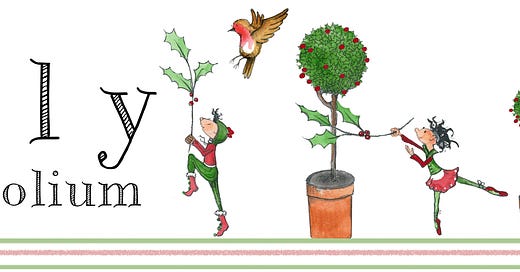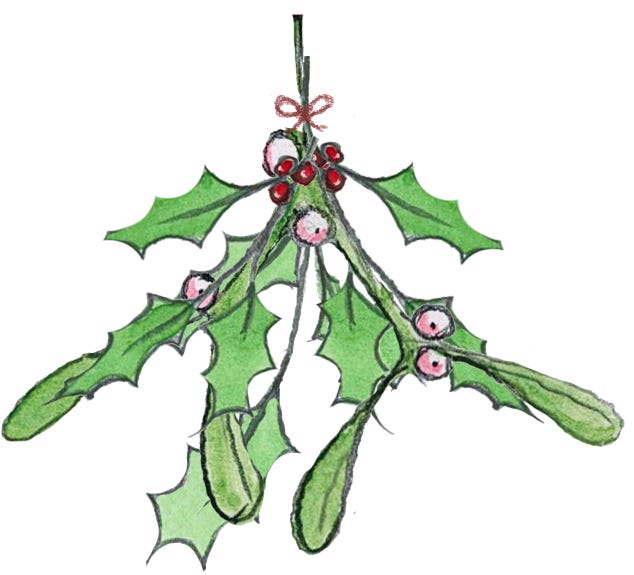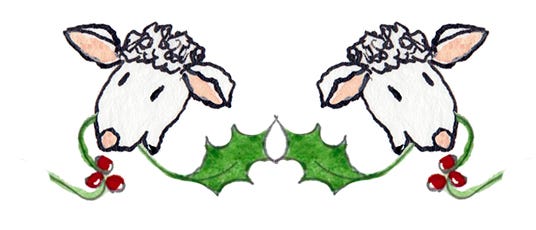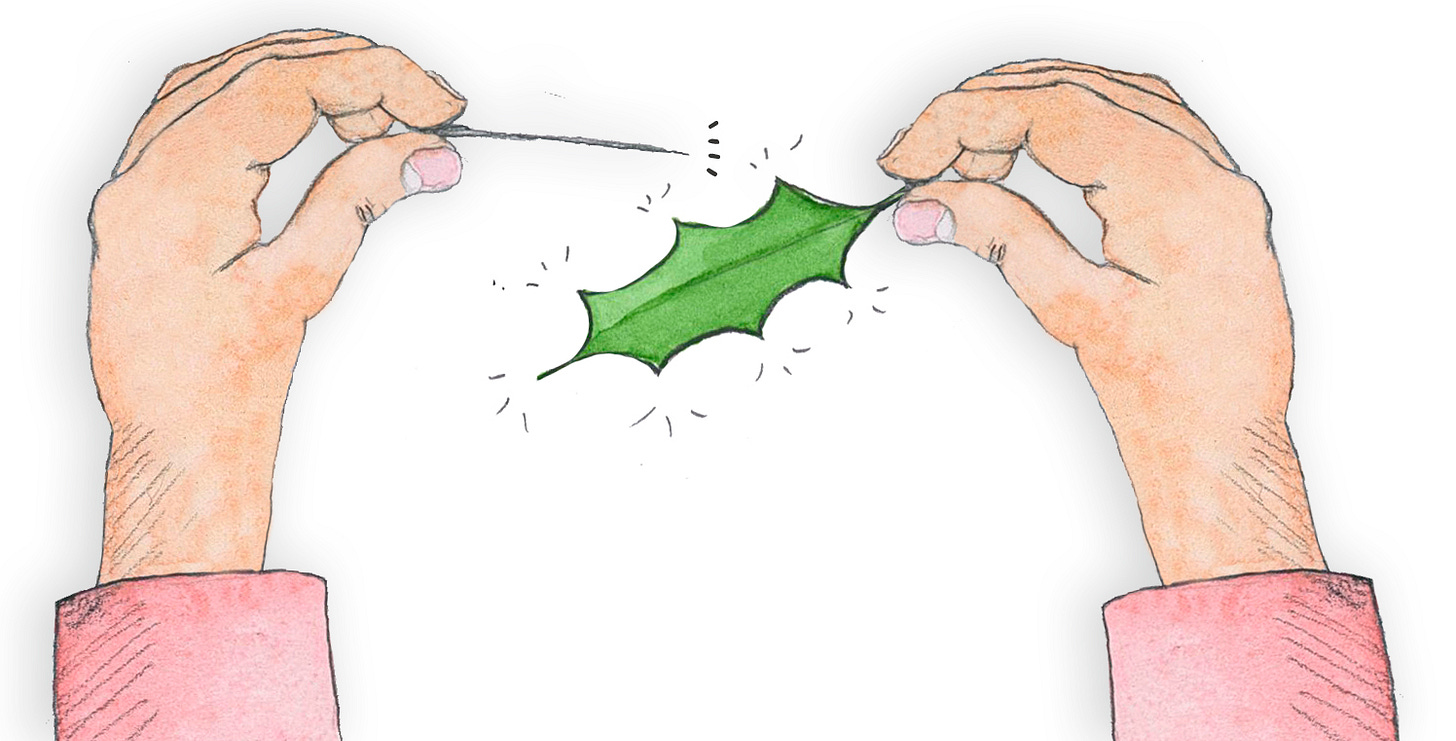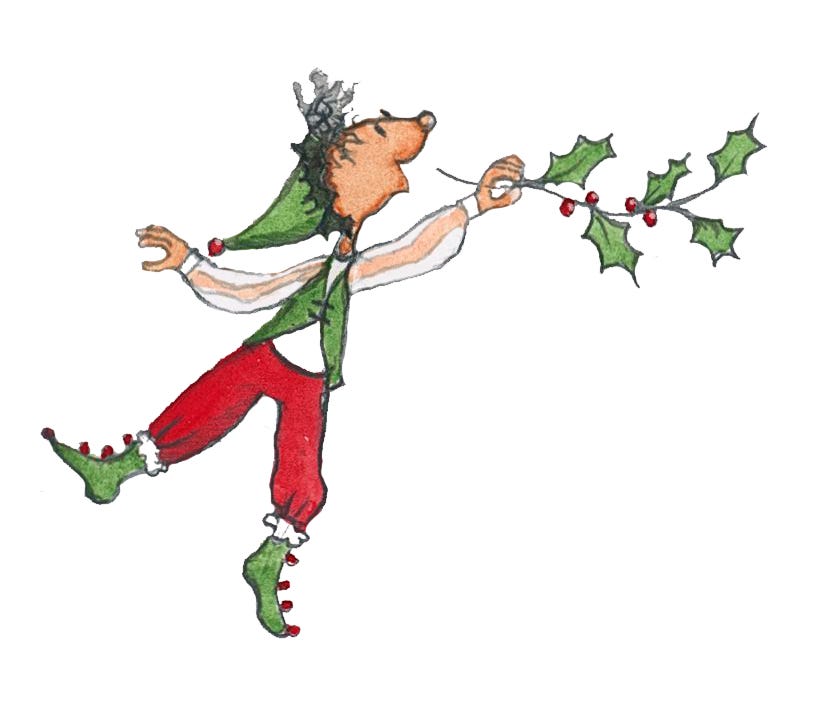Before the 1790’s when Queen Charlotte, wife of King George III, introduced the idea of using decorated spruce or fir trees at Christmas, it was holly, that was known as Christmas (Tree).
The link between Holly and Christmas was strong, as an evergreen shrub it represented eternal life, the prickly leaves the crown of thorns and the red berries the blood of Christ.
In the middle ages there were strict rules around when and how long you would have your holly in your house at Christmas. Too soon, too short or too long, it would all bring bad luck. Rather inconveniently these rules varied by region.
Long before the days when holly was still known as ‘holin’ (Middle English) and even before the word ‘Holegn’ was still used for Holly (Old English), the tradition of decorating your home with evergreens at mid-winter was well established.
The Romans already sent their friends gifts of evergreens during the festival of Saturnalia (17 - 23 December) and prior to that, the Druids would use evergreens in their round houses at midwinter to accommodate Sylvan Spirits.
It is believed that even in pre-historic times people would take evergreens into their homes at midwinter. They did that for two reasons:
To ward of evil and aid fertility. Both holly and mistletoe were useful for this purpose. But holly was particularly powerful, thanks to its red berries. The colour red was seen as formidable protection against anything evil, whether it was a demon, a spell or curse, a witch, a night-goblin or even an incubus.
In the case of Holly, the red berries would protect you against enchantment, hexes and bewitchment. Combine this with a few springs of mistletoe and you have a powerful charm, which, as an additional benefit, being an evergreen, was believed to aid fertility too.To feed cattle, especially sheep, when there wasn’t much else around to feed them. Holly leaves are one of the most nutritious and calorific leaves you can find. Us modern people might think it a bit cruel to feed sheep the sharp, prickly leaves. Farmers in ancient times thought the same and they would shred the holly to make it more palatable for their animals. We know this as ancient grinders have been found with traces of holly still present.
The Latin name for holly, Ilex Aquifolium, appropriately means needle leaf.
The Old English word holegn most likely came from Germany and Holland through the Saxons during the Migration Period (375-700AD), who used the word huls, hols or hulst for holly. The root of these words comes from words related to stabbing, pricking, stinging and poking.
Although holly is useful to have around to ward of evil and prevent enchantment, you don’t want to get too greedy. Apparently cutting down a whole holly tree brings terrible bad luck. Burning holly can also result in serious misfortune. Best to stick to just a few needle leaves and red berries and then feed them to your sheep after Christmas!
Alternative names for holly are:
Christmas, Hulver Bush, Holm, Hulm, Holme Chase, Holy Tree, Christ’s Thorn
Merry Christmas!
This newsletter is NOT a field guide for flower identification. It’s often difficult to tell the difference between harmless plants and poisonous plants and some flowers are rare and protected by law, so, NEVER pick or use any plants or flowers if you’re not sure about them.
illustrations and text ©Chantal Bourgonje


